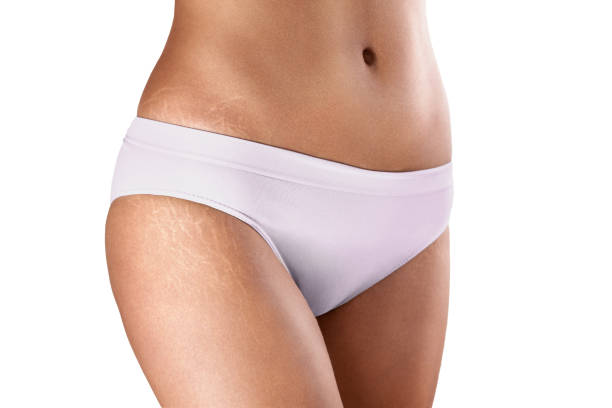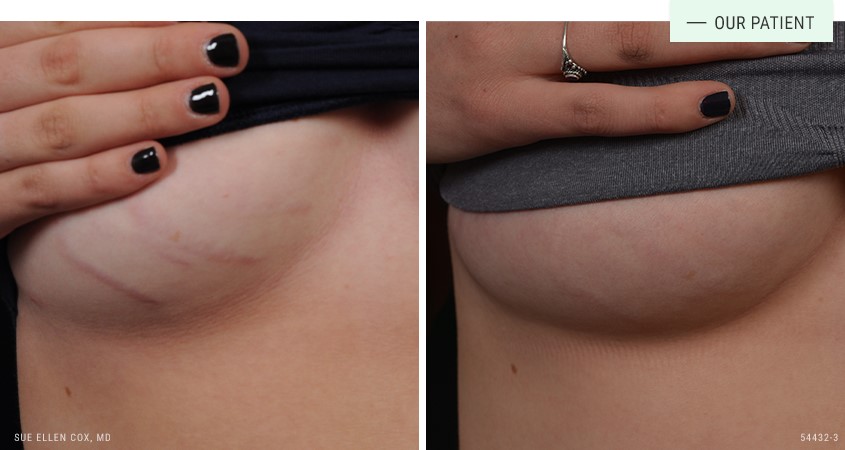Cosmetic Treatments for Stretch Marks: Red vs White Stretch Marks and Treatment Options

What Causes Stretch Marks?
Stretch marks are linear, thinned out, scar-like lesions on the skin, typically seen in areas prone to prolonged stretching of the skin. They are exceedingly common, seen in all ages, and are most often seen on the abdomen, thighs, and buttocks. There is thought to be a genetic predisposition and a hormonal aspect contributing to stretch mark formation, and they are more common in the female gender. Periods of rapid expansion of the underlying tissue such as pregnancy, puberty, rapid weight gain, and weight lifting with rapid muscle building can also be triggers.
How Long Does it Take for Stretch Marks to Fade?
Newer stretch marks tend to be red or purple and more raised. With no intervention, these will eventually flatten out and will lighten in color, often becoming hypopigmented. Just like any other subtype of scarring, once we have stretch marks, we can never get rid of them completely, and treatment is aimed at fading the coloration and improving the texture for enhanced blending with the surrounding skin.
Can Topical Products Help with Stretch Marks
Topical tretinoin 0.1% cream has been shown to decrease the size of the lesions and improve appearance when utilized long term over red stretch marks (striae rubra). However, in patients with sensitive skin, tretinoin can cause irritation and induce further redness of the lesions.
How to Treat Stretch Marks
The key to stretch mark treatment is early intervention. Just like any scar, the earlier we can intervene, the bigger of a difference we can make.
Red Stretch Marks
Pulsed Dye Laser (Vbeam). This laser specifically targets redness and can help fade red and purple stretch marks. Additionally, by altering PDL settings, we can decrease proliferation of abnormal fibroblasts, or cells active during scar formation, while enhancing normal collagen production. Treatments are typically performed as a series of 4-6 sessions, spaced 4-6 weeks apart.
White Stretch Marks
White stretch marks, much like matured scars, are more challenging to treat. For optimal results, treatment of both the thinned skin component and the textural component works best. For the thinned skin, a biostimulatory injectable such as Sculptra or Radiesse is appropriate to enhance collagen production and help with atrophy. To better blend the texture with the surrounding skin, either Fraxel laser or Microneedling work well.
Can Stretch Marks Come Back After Treatment?
When we treat preexisting stretch marks, the improvements that we make are permanent. That being said, with new triggers, it is possible for you to create additional stretch marks. Furthermore, if trauma or surgical incisions were to be made on top of preexisting stretch marks, these can occasionally cause stretch marks to widen and become more noticeable.
If you are interested in treating Stretch Marks in the Raleigh, Durham, Chapel Hill area, contact our office for more information on treatment.

